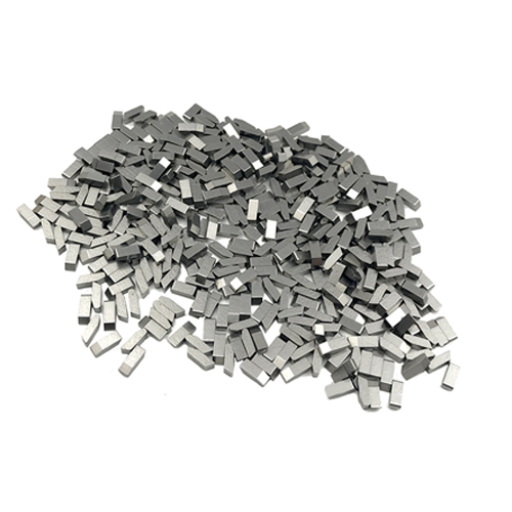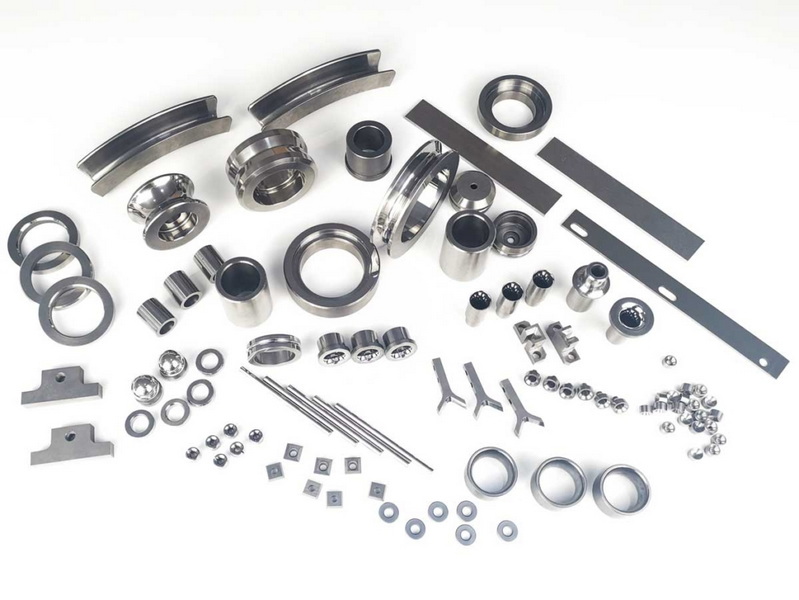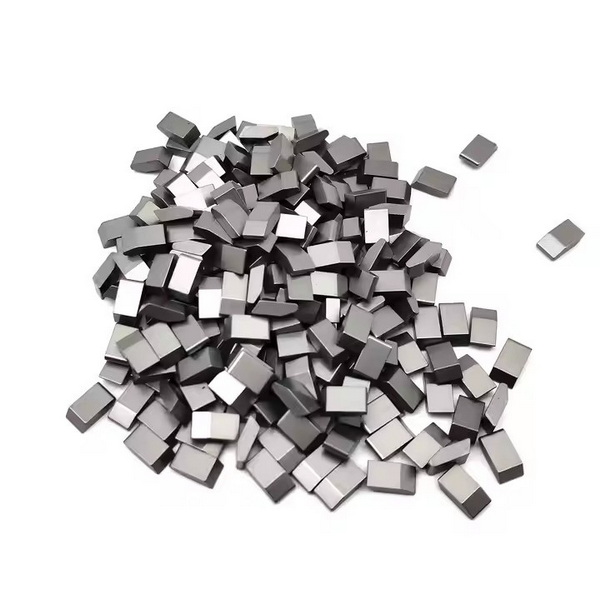Content Menu
● Understanding Tungsten Carbide
● Composition of Tungsten Carbide
● Magnetic Properties of Tungsten Carbide
>> 1. Pure Tungsten Carbide:
>> 2. Binder Influence:
>> 3. Ferromagnetism vs. Diamagnetism:
● Factors Affecting Magnetic Properties
● Applications Influenced by Magnetic Properties
● Measurement Techniques
● Conclusion
● FAQ
>> 1. Is pure tungsten magnetic?
>> 2. What affects the magnetism of tungsten carbide?
>> 3. Can I use a magnet to pick up tungsten carbide tools?
>> 4. What are common applications for tungsten carbide?
>> 5. How does temperature affect the magnetism of tungsten carbide?
● Citations:
Tungsten carbide is a widely used material known for its exceptional hardness, wear resistance, and thermal stability. It is commonly found in industrial applications, such as cutting tools, mining equipment, and jewelry. A frequent question arises regarding the magnetic properties of tungsten carbide: Can you pick up tungsten carbide with a magnet? This article explores the magnetic characteristics of tungsten carbide, its composition, and the implications for its use in various applications.

Understanding Tungsten Carbide
Tungsten carbide (WC) is a chemical compound consisting of equal parts of tungsten and carbon atoms. It is typically produced by combining tungsten powder with carbon at high temperatures, resulting in a very hard material that is nearly as hard as diamond. The unique properties of tungsten carbide make it suitable for various applications, but its interaction with magnets can vary based on its composition.
Composition of Tungsten Carbide
Tungsten carbide is not a pure substance; rather, it is often combined with binder metals to enhance its mechanical properties. The most common binder metals include:
- Cobalt (Co): Provides toughness and strength.
- Nickel (Ni): Offers corrosion resistance.
- Iron (Fe): Can enhance magnetic properties.
The proportion of these binder metals can significantly influence the magnetic behavior of tungsten carbide. The manufacturing process and subsequent heat treatments also play a vital role in determining the final properties of the material.
Magnetic Properties of Tungsten Carbide
1. Pure Tungsten Carbide:
In its pure form, tungsten carbide is non-magnetic. The strong covalent bonds between tungsten and carbon atoms form a crystal structure that prevents any alignment of magnetic moments, rendering it incapable of being attracted to magnets. This diamagnetic behavior arises from the electronic structure of tungsten and carbon, where paired electrons cancel out any net magnetic moment.
2. Binder Influence:
The presence of ferromagnetic binder metals like cobalt, nickel, or iron can impart some magnetic properties to tungsten carbide. The extent of this magnetism depends heavily on the type and concentration of the binder metal. For example:
- Low Cobalt Content (6-15%): Tungsten carbide with low cobalt content may exhibit weak magnetic properties. The cobalt atoms contribute to localized magnetic moments that can align under an external magnetic field, but the overall effect is relatively small due to the high proportion of non-magnetic tungsten carbide.
- High Cobalt Content (15-30%): With higher cobalt content, the material becomes more noticeably magnetic due to the ferromagnetic nature of cobalt. The increased concentration of cobalt allows for stronger alignment of magnetic domains, resulting in a greater attraction to magnets.
- Nickel and Iron Binders: Nickel and iron can similarly influence the magnetic properties of tungsten carbide. Nickel, being ferromagnetic, contributes to magnetism, although often to a lesser extent than cobalt. Iron, also ferromagnetic, can be used to tailor the magnetic response of tungsten carbide for specific applications.
3. Ferromagnetism vs. Diamagnetism:
While pure tungsten is diamagnetic (repelling magnets), the addition of ferromagnetic materials alters this behavior, making the composite material potentially magnetic depending on the binder content. The interplay between diamagnetic tungsten carbide and ferromagnetic binders determines the net magnetic behavior of the composite material. This behavior is crucial in applications where magnetic sorting or detection is required.
Factors Affecting Magnetic Properties
Several factors beyond the binder metal type and concentration can influence the magnetic properties of tungsten carbide:
1. Grain Size: The grain size of both the tungsten carbide and the binder metal can affect the magnetic domain structure and alignment. Smaller grain sizes may lead to increased domain boundaries, which can hinder magnetic alignment and reduce overall magnetism.
2. Manufacturing Process: The sintering process, including temperature and pressure, can impact the distribution and homogeneity of the binder metal within the tungsten carbide matrix. Non-uniform distribution can lead to variations in magnetic properties across the material.
3. Heat Treatment: Post-sintering heat treatments can alter the microstructure and magnetic domain structure of the binder metal, affecting the overall magnetic behavior of the tungsten carbide composite.
4. Impurities: The presence of impurities, such as oxygen or other metallic elements, can disrupt the magnetic order within the binder metal and reduce the overall magnetism of the material.
Applications Influenced by Magnetic Properties
The magnetic properties of tungsten carbide can significantly affect its applications in various industries:
1.Cutting Tools:
In manufacturing environments where magnetic fields are present, the magnetic response of tungsten carbide cutting tools can influence their behavior. For instance, magnetic chucks are used to hold cutting tools in place, and the magnetic properties of the tool material can affect the efficiency of the chucking process. Additionally, the magnetic response can be exploited for tool identification and tracking in automated manufacturing systems.
2. Jewelry:
Tungsten carbide rings and other jewelry items may be alloyed with metals that impart magnetism, affecting their interaction with other metallic items. This can be a consideration for individuals who work in environments with strong magnetic fields or who wear magnetic bracelets.
3. Industrial Equipment:
Equipment components made from tungsten carbide may require specific grades to ensure desired magnetic characteristics for operational efficiency. For example, in magnetic separation systems, tungsten carbide components must have specific magnetic properties to interact effectively with the magnetic fields used to separate materials.
4. Medical Applications:
In medical applications, such as surgical instruments, the magnetic properties of tungsten carbide are carefully controlled to ensure compatibility with MRI machines and other medical imaging equipment. Non-magnetic or weakly magnetic grades are preferred to avoid interference with imaging procedures.
5. Mining and Drilling:
In mining and drilling operations, tungsten carbide components are used in drill bits and wear-resistant parts. The magnetic properties of these components can be important for magnetic resonance imaging (MRI) techniques used to map underground geological structures.
6. Wear Parts:
As wear components in various machines and instruments, carefully engineered magnetic properties in Tungsten Carbide can allow for easier sorting or detection when the parts fail or break.

Measurement Techniques
The magnetic properties of tungsten carbide can be measured using various techniques:
1.Vibrating Sample Magnetometry (VSM):
VSM is a common technique for measuring the magnetic hysteresis loops of materials. It involves vibrating a sample in a uniform magnetic field and measuring the induced voltage in a pickup coil. The hysteresis loop provides information about the saturation magnetization, remanence, and coercivity of the material.
2. Superconducting Quantum Interference Device (SQUID) Magnetometry:
SQUID magnetometry is a highly sensitive technique for measuring weak magnetic moments. It uses superconducting loops to detect changes in magnetic flux caused by the sample. SQUID magnetometers are capable of measuring both DC and AC magnetic susceptibility.
3. Hall Effect Measurement:
Hall effect measurements can be used to determine the carrier concentration and mobility in the binder metal phase of tungsten carbide. These parameters are related to the magnetic properties of the material.
4. Magnetic Force Microscopy (MFM):
MFM is a scanning probe microscopy technique that maps the magnetic force gradient above a sample surface. It can be used to visualize magnetic domains and domain boundaries in tungsten carbide composites.
Conclusion
In summary, whether you can pick up tungsten carbide with a magnet depends largely on its composition. Pure tungsten carbide is non-magnetic; however, when alloyed with ferromagnetic binders like cobalt, nickel, or iron, it can exhibit varying degrees of magnetism. The type and concentration of the binder metal, along with manufacturing processes and heat treatments, all play a crucial role in determining the final magnetic properties of the material. Understanding these properties is crucial for selecting the right grade of tungsten carbide for specific applications in industries ranging from manufacturing to medicine. Further research into optimizing the magnetic properties of tungsten carbide could lead to new and innovative applications in the future.

FAQ
1. Is pure tungsten magnetic?
No, pure tungsten is not magnetic; it exhibits diamagnetic properties, which means it repels magnets. This is due to the electronic structure of tungsten, where all electrons are paired, resulting in no net magnetic moment.
2. What affects the magnetism of tungsten carbide?
The type and amount of binder metal used in the production of tungsten carbide affect its magnetic properties. Higher cobalt content generally increases magnetism, as cobalt is a ferromagnetic material. Other factors include grain size, manufacturing process, heat treatment, and the presence of impurities.
3. Can I use a magnet to pick up tungsten carbide tools?
It depends on the binder content. Tools made from pure tungsten carbide will not respond to magnets, while those with ferromagnetic binders may be attracted. The strength of the attraction will depend on the concentration of the ferromagnetic binder.
4. What are common applications for tungsten carbide?
Tungsten carbide is used in cutting tools, mining equipment, industrial machinery, and jewelry due to its hardness and wear resistance. It is also used in medical instruments, wear parts, and other applications where high strength and durability are required.
5. How does temperature affect the magnetism of tungsten carbide?
Temperature changes can influence the magnetic properties; generally, higher temperatures may reduce magnetism in ferromagnetic materials. This is because thermal energy can disrupt the alignment of magnetic domains within the binder metal, reducing the overall magnetism of the composite material.
Citations:
[1] https://www.boyiprototyping.com/materials-guide/is-tungsten-magnetic/
[2] https://en.wikipedia.org/wiki/Tungsten_carbide
[3] https://blog.carbideprocessors.com/tungsten-carbide/tungsten-carbide-and-magnetism/
[4] https://www.linde-amt.com/resource-library/articles/tungsten-carbide
[5] https://www.linkedin.com/pulse/tungsten-carbide-magnetic-shijin-lei
[6] https://www.vedantu.com/chemistry/tungsten-carbide
[7] https://www.hyperionmt.com/en/Resources/materials/cemented-carbide/electrical-and-magnetic-properties/
[8] http://www.tungsten-carbide.com.cn
















